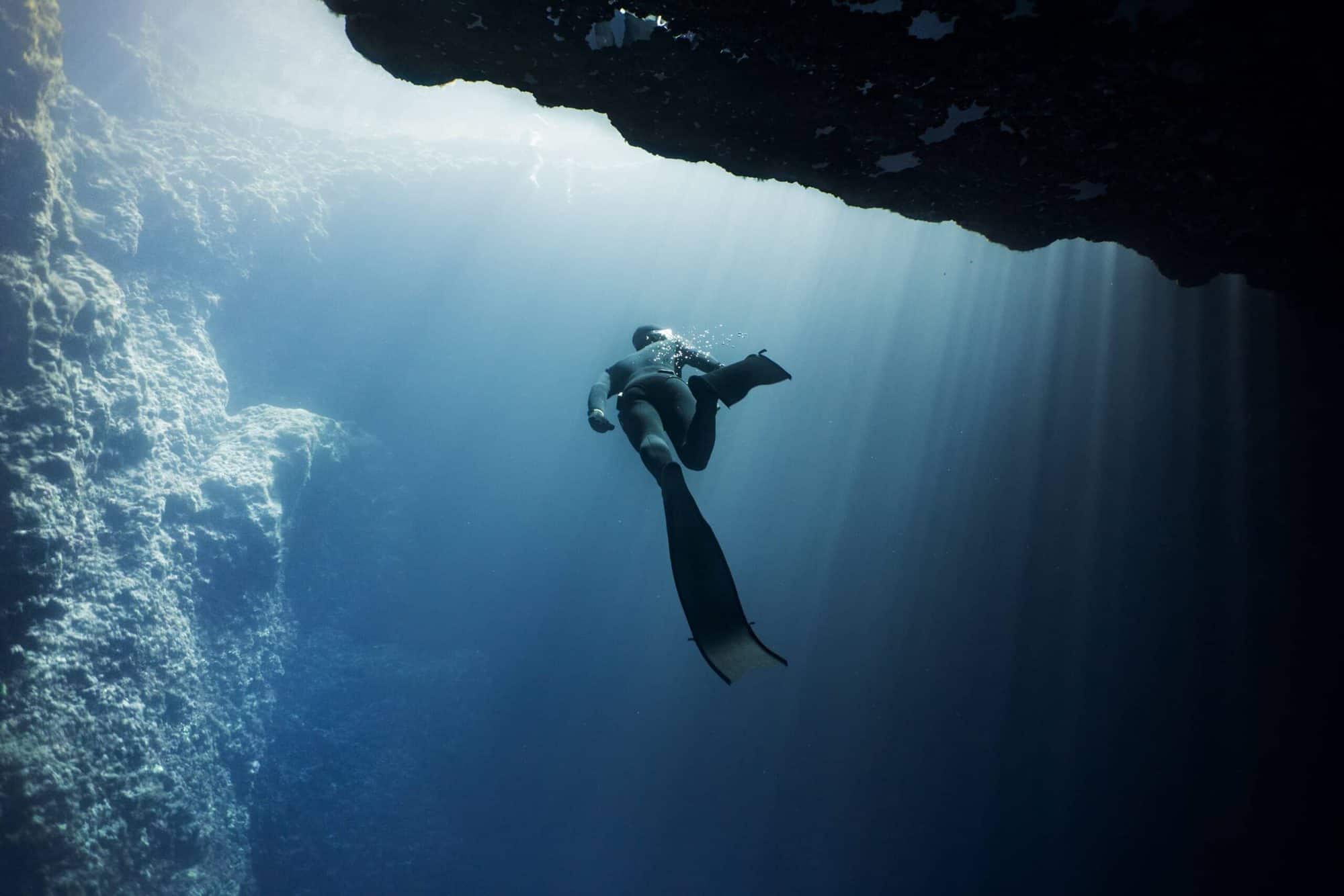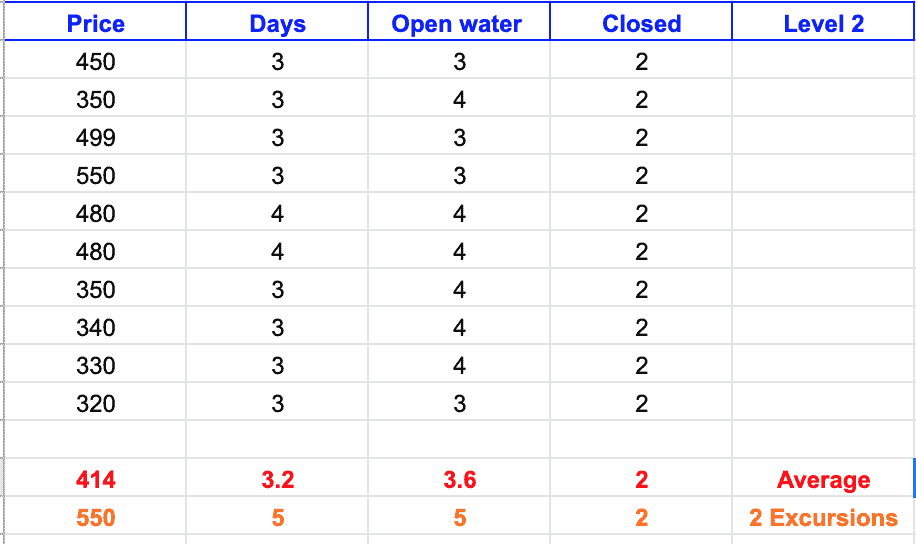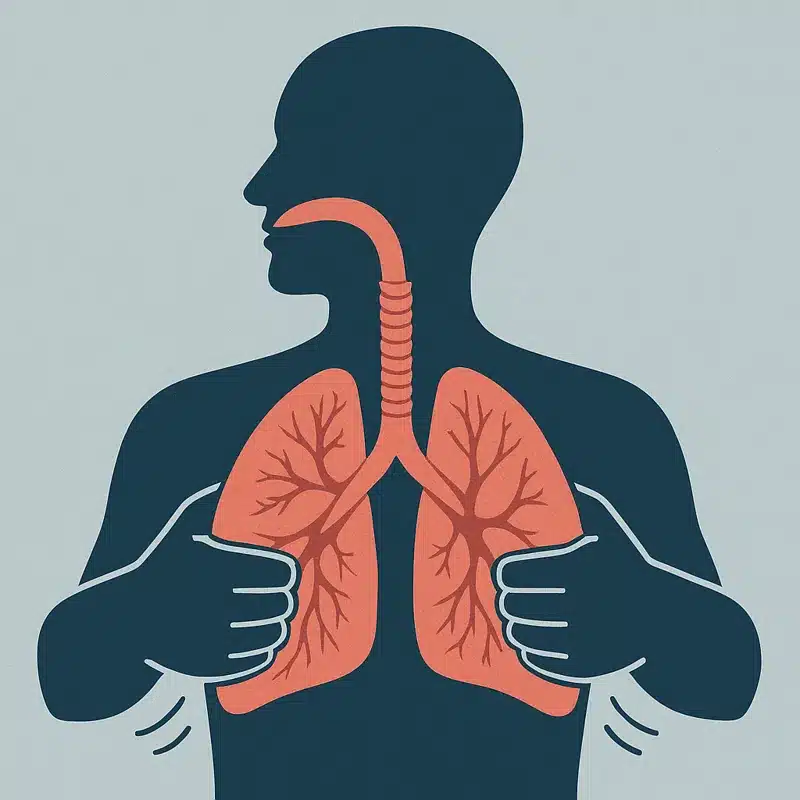The residual volume of the average human is approximately 1/4 of the total lung capacity (TLC). As a freediver starts to descend on a single breath, the residual volume will be reached at 30 metres. Fully exhaling on the surface and freediving on this lung volume is known as exhale diving or RV diving, which is beneficial for depth adaptation and equalising. Getting in touch with an experienced coach is essential to safe practice and progression. The lungs will be under extreme pressure and risk for lung squeeze can increase.
Exhale diving and FRC diving was particularly popular with giants like William Trubbridge and Eric Fattah back in the early 2000’s where a segment of freedivers were applying FRC diving to a maximal performance.
When the COVID pandemic first hit in 2020, William Trubridge offered 10 webinars where he spoke about various topics of interest to keen freedivers. Exhale diving was one of them and we’ve summarised the webinar for you.
Physiology of diving mammals
All of the deepest diving mammals such as the sperm whale, weddell seal, elephant seal and so far the Cuvier’s beat whale, all exhale before they dive. Since exhale diving seems to be the most efficient way to dive for these mammals, Eric Fattah tested his limits with exhale diving and put the theory to test.
Most of the whales mentioned above are extremely buoyant on the surface with a high body fat percentage. The main reason for this is to protect them from the cold. If these whales were to dive on an inhale they would be expending far too much energy, resulting in shorter dive times. The deepest mammals who live in cold waters exhale whilst others like dolphin who lack body fat, inhale. In a nutshell, exhale diving is predominant in more buoyant mammals whilst inhale diving is predominant in less buoyant mammals.
A study was made to figure out where oxygen is stored in different mammals. It was noted that exhale diving mammals do not store oxygen in their lungs but in their muscles or blood. The lungs are a pathway to deliver oxygen just like our trachea to deliver air to our lungs. On the contrary, inhale diving mammals have a higher storage of oxygen in the lungs with humans being more dominant. What this tells us is that our physiology is closer to inhaling diving mammals than exhaling.
Depth adaptation through exhale diving
The main goal of exhale diving is to become more comfortable with being at depth where your lungs are compressed below residual volume. It is possible to solve depth adaptation where you get to a point solving your flexibility or adaptation where your lungs can accommodate any external pressure (within reason). This is the point at which as you go deeper, you will not encounter any problems.
We know that the average residual volume of most humans is around 1/4 of your total lung capacity. For arguments sake, let us say a freediver drops on a complete exhale to a depth of 20 metres (1/3). If we were to reduce the average residual volume of 1/4 by a further 1/3 we would get a result of 1/12. At 20 metres we would have 1/12 of total lung capacity which is the equivalent of going to 11 ATA – 110 meters. This indicates that the diver is fine in going to any other depth in his or her training.
Exhale diving tips
- Stretching should be continued at all times during your off season and when there is limited access to the sea.
- Exhale diving should be progressed slowly and gently. Start off with performing dry statics (without a nose clip) and move onto diving. Make sure to go easy by repeating shallow depths. Once you feel comfortable and god deeper, reduce the repetitions.
- Pulmonary oedema is on some level unavoidable. There will be a build up of fluid into the lungs which will become more intense as you go deeper. Be careful as this is a precursor to lung squeeze. We always want to stay in a conservative position.
- Avoid any contractions or any sudden/wrong movements. Do not pull hard.
Exhale diving principles
- When talking about exhale diving, we are talking about full exhale diving on residual volume and not FRC (functional residual capacity). There is little benefit to FRC diving over residual volume diving.
- Properly warming up before exhale diving is essential for safe progress. Entering the dive cold is risky and exercises such as light dynamic movements with lung stretching will do the job.
- If you have a confirmed or suspected lung barotrauma / squeeze, avoid these types of dives. Take your time to rest and fully recover.
- Performing these types of dives can work before a target dive to adapt and warm up the lungs. The duration of these dives should be short. Having a 20 minute break in between dives will be enough to recharge the dive reflex.
- Relaxation is especially important in exhale diving. Every area in the body should be relaxed throughout the duration of the dive. The face, chest and belly are common areas where tension is held.
- Stay very close to the rope only divine free immersion. This ensures full control of the ascent and descent whilst having a safety net. When ascending, avoid strong pulls.
- Diving head first mimics the reality of a target dive and will allow you to train freefall, helping you becoming accustomed.
- Prepare and breathe-up the same way you would for a target dive.
- No sudden or strong movements during exhale diving, especially the head or neck to avoid trachea damage.
- Avoid contractions as these themselves are sudden movements involving breathing muscles that expand the rid cage and pull the diaphragm up.
- Do some kind of inhale on the surface after the dive. Full inhales and packing stretch the lungs and ribcage in the opposite direction of exhale diving.
Conclusion
Do not practice exhale diving without a buddy or the instruction of an experienced professional. Aharon Solomns is a big fan of this training and has trained many prominent freedivers. Training on your own is dangerous and can lead to lung squeezes or pulmonary oedema


